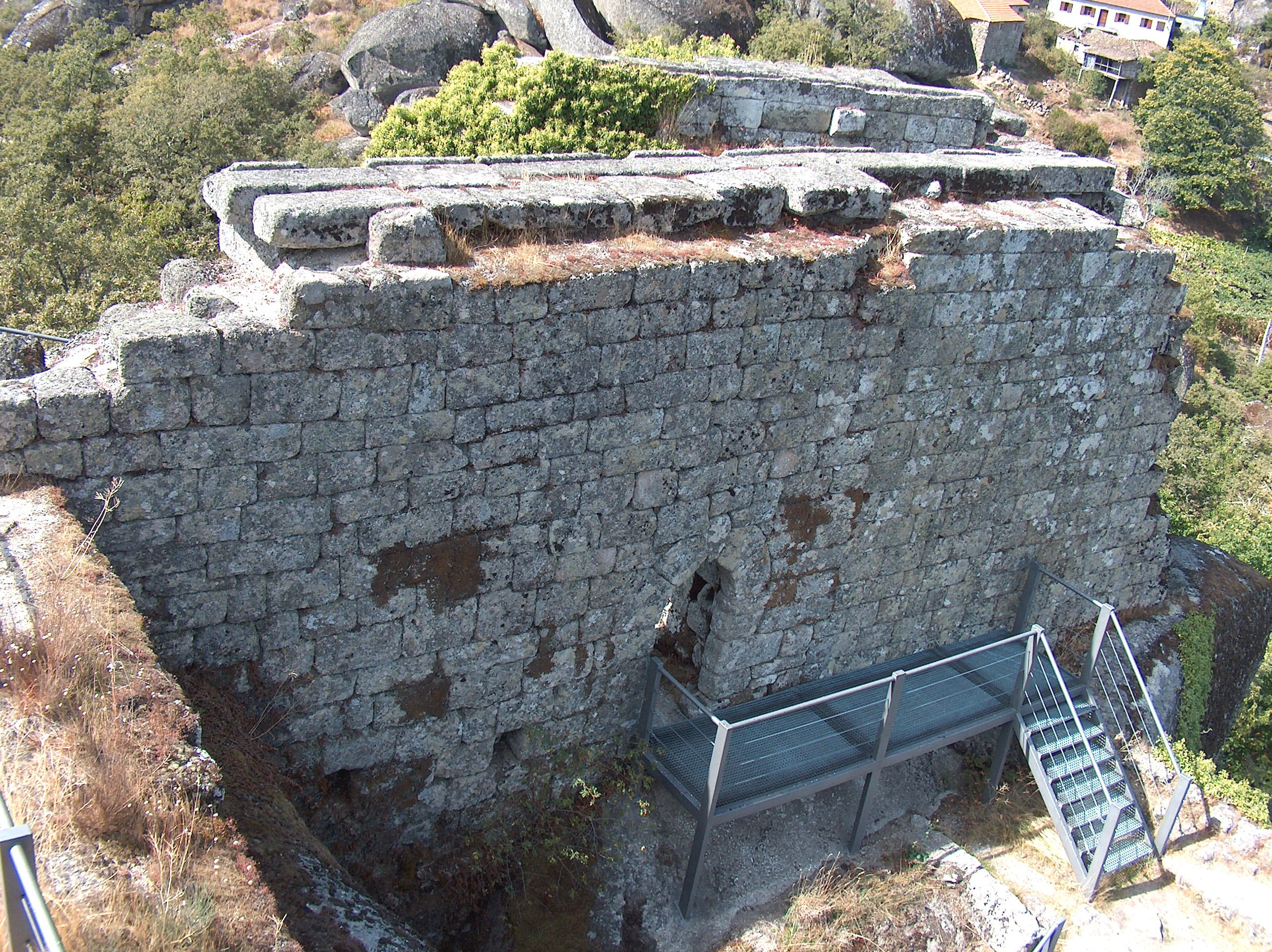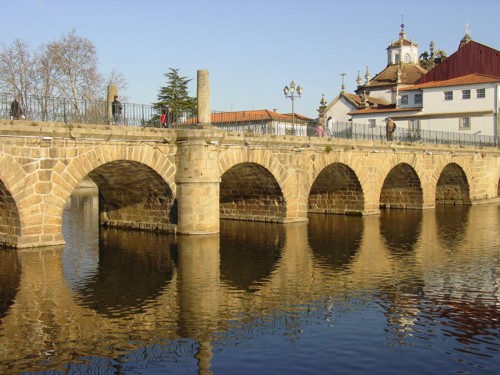Alto Trás-os-Montes on:
[Wikipedia]
[Google]
[Amazon]
Alto Trás-os-Montes (), or ''Nordeste Transmontano'', is a former NUTS-level 3 subregion of the Norte Region of

 {{DEFAULTSORT:Alto Tras-os-Montes Subregion
Former NUTS 3 statistical regions of Portugal
{{DEFAULTSORT:Alto Tras-os-Montes Subregion
Former NUTS 3 statistical regions of Portugal
Portugal
Portugal, officially the Portuguese Republic, is a country on the Iberian Peninsula in Southwestern Europe. Featuring Cabo da Roca, the westernmost point in continental Europe, Portugal borders Spain to its north and east, with which it share ...
. It was abolished at the January 2015 NUTS 3 revision. Its 15 municipalities occupied an area of in the north-east of continental Portugal
Continental Portugal (, ) or mainland Portugal comprises the bulk of the Portuguese Republic, namely that part on the Iberian Peninsula and so in continental Europe, having approximately 95% of the total population and 96.6% of the country's l ...
with an estimated 2008 population of 214,460 inhabitants; thus it constituted approximately 40% of the area, but only 6.1% of the population, of the Norte Region.
Geography
The Trás-os-Montes area refers to a contiguous territory that has similar social and cultural identities, but diverges on the potential economic abilities, while constituting a territorial unit with scale and critical mass to act in concert politically. In addition to its land border withSpain
Spain, or the Kingdom of Spain, is a country in Southern Europe, Southern and Western Europe with territories in North Africa. Featuring the Punta de Tarifa, southernmost point of continental Europe, it is the largest country in Southern Eur ...
(in the north and north-northeast), it is also juxtapositioned with the subregions of the Douro
The Douro (, , , ; ; ) is the largest river of the Iberian Peninsula by discharge. It rises near Duruelo de la Sierra in the Spanish Soria Province, province of Soria, meanders briefly south, then flows generally west through the northern par ...
(to the south), Tâmega Subregion (in the southwest), Ave
is a Latin word, used by the Roman Empire, Romans as a salutation (greeting), salutation and greeting, meaning 'wikt:hail, hail'. It is the singular imperative mood, imperative form of the verb , which meant 'Well-being, to be well'; thus on ...
(in the southwest) and Cávado (in the west). The NUTS III region of Alto Trás-os-Montes includes the following municipalities:
* Alfândega da Fé
Alfândega da Fé (), officially the Town of Alfândega da Fé (), is a municipality in northeast Portugal. The population in 2011 was 5,104,Moorish
The term Moor is an exonym used in European languages to designate the Muslim populations of North Africa (the Maghreb) and the Iberian Peninsula (particularly al-Andalus) during the Middle Ages.
Moors are not a single, distinct or self-defi ...
enclave, it was conquered by Asturian Christians and its original name, ''Alfandagh'' (which means ''hospice''), was extended with ''Fe'' (meaning ''faith''). The beginnings of its municipal history date back to a ''foral'' established on 8 May 1294, by King Denis of Portugal
Denis (, ; 9 October 1261 – 7 January 1325), called the Farmer King (''Rei Lavrador'') and the Poet King (''Rei Poeta''), was King of Portugal from 1279 until his death in 1325.
Dinis was the eldest son of Afonso III of Portugal by his second ...
;
* Boticas - its history dates back to the Guedeões-Barroso line of hereditary clans (the Barrosos, were the predominant line, fixing themselves in Braga and Barcelos) becoming signeurs and administrators of the lands of the Trás-os-Montes until the lands were donated. The municipality was established during the Liberal regime (6 November 1836 decree) from portions of Chaves and Montalegre;
* Bragança - home to the hereditary line of the House of Braganza
The Most Serene House of Braganza (), also known as the Brigantine dynasty (''dinastia Brigantina''), is a dynasty of emperors, kings, princes, and dukes of Portuguese people, Portuguese origin which reigned in Europe and the Americas.
The hous ...
, established in 1442 by King Afonso, responsible for providing Portugal its kings (from 1640 to 1910) and the emperors (from 1822 to 1889): at the end of the Iberian Union
The Iberian Union is a historiographical term used to describe the period in which the Habsburg Spain, Monarchy of Spain under Habsburg dynasty, until then the personal union of the crowns of Crown of Castile, Castile and Crown of Aragon, Aragon ...
with Spain
Spain, or the Kingdom of Spain, is a country in Southern Europe, Southern and Western Europe with territories in North Africa. Featuring the Punta de Tarifa, southernmost point of continental Europe, it is the largest country in Southern Eur ...
, after the 1 December 1640, that the ascension of the 8th Duke of Braganza (then military governor of Portugal), John IV to the title of King that restored the Portuguese monarchy;
* Chaves – founded during the reign of the Flavian Emperor Vespasian
Vespasian (; ; 17 November AD 9 – 23 June 79) was Roman emperor from 69 to 79. The last emperor to reign in the Year of the Four Emperors, he founded the Flavian dynasty, which ruled the Empire for 27 years. His fiscal reforms and consolida ...
, Aquae Flaviae
Aquae Flaviae (or ''Aquæ Flaviæ'') is the ancient Ancient Rome, Roman city and Aquae Flaviae (titular see), former bishopric (now a Latin Catholic titular see) of Chaves, Portugal, Chaves, a Concelho, municipality in the Portugal, Portuguese Vil ...
, was renowned during this period for its thermal springs and baths. During the Middle Ages
In the history of Europe, the Middle Ages or medieval period lasted approximately from the 5th to the late 15th centuries, similarly to the post-classical period of global history. It began with the fall of the Western Roman Empire and ...
it was traded back and forth between Spanish and Portuguese monarchs, as well as the seat of ''Monarchy of the North'', during the failed monarchist revolts of the 20th century;
* Macedo de Cavaleiros
Macedo de Cavaleiros () is a city and municipality in northeastern Portugal, in Bragança District. The population in 2011 was 15,776, in an area of 699.14 km2.
History
During antiquity, the region was occupied by the Celts, then Romans an ...
– named in honour of Martim Gonçalves de Macedo, who saved John, the Master of Aviz during the Battle of Aljubarrota
The Battle of Aljubarrota was fought between the Kingdom of Portugal and the Crown of Castile on 14 August 1385. Forces commanded by King John I of Portugal and his general Nuno Álvares Pereira, with the support of English allies, opposed the a ...
, the municipality is best known for the '' Paisagem Protegida da Albufeira do Azibo'' a reservoir constructed during the 1980s to support the communities, but used for both recreational and leisure activities.
* Miranda do Douro
Miranda do Douro (), officially the City of Miranda do Douro (; , ), is a city and a municipality in the district of Bragança, northeastern Portugal. The population in 2011 was 7,482, in an area of 487.18 km2. The town proper had a populati ...
* Mirandela
Mirandela (), officially the City of Mirandela (), is a city and a municipality in northeastern Portugal. The city itself is contained by the Mirandela parish, which had a population of 11,397. The population of the municipality in 2021 was 21,38 ...
* Mogadouro
Mogadouro (, ), officially the Town of Mogadouro (; ), is a List of municipalities of Portugal, municipality in Portugal. The population in ''2011'' was 9,542, in an area of 760.65 km2.
History
The history of Mogadouro is evident in the nu ...
* Montalegre
Montalegre (), officially the Town of Montalegre (), is a municipality in northern Portugal, located in the district of Vila Real, along the border with Spain. The population in 2011 was 10,537, in an area of 805.46 km².
History
Early con ...
* Murça
Murça (), officially the Town of Murça (), is a municipality in northern Portugal. The population in 2011 was 5,952, in an area of 189.37 km2. It is situated in the central part of the eastern district of Vila Real, and consigned to the Tr ...
* Valpaços
Valpaços () is a municipality in northern Portugal. The population in 2011 was 16,882, in an area of 548.74 km2.
History
The first documents that cite Valpaços date back to the 12th century. Its toponymy evolved from pre-national settlem ...
* Vila Pouca de Aguiar
* Vimioso
Vimioso (), officially Town of Vimioso (; , ) is a town and municipality in the district of Bragança in the northern part of Portugal
Portugal, officially the Portuguese Republic, is a country on the Iberian Peninsula in Southwestern Euro ...
* Vinhais
The inhabitants are not homogeneously distributed within the region: with most of the population concentrated in the principal urban agglomerations, the region has experienced a continuous process of rural-to-urban population migration to centres within or outside the region. Yet, simultaneously, the medium-to-small centres have taken on a catalytic role in urbanization and economic development.
The structure of the Trás-os-Montes hierarchy is highlighted by the largest of these "medium"-sized cities (Bragança, Mirandela and Chaves), corresponding to the principal urban poles, and articulated by a complementary urban network, constituted by the seats of the municipalities of Alfândega da Fé, Boticas, Macedo de Cavaleiros, Miranda do Douro, Mogadouro, Montalegre, Ribeira de Pena
Ribeira de Pena () is a municipality in the Vila Real District, in Norte Region in Portugal. The population in 2011 was 6,544,olive oil
Olive oil is a vegetable oil obtained by pressing whole olives (the fruit of ''Olea europaea'', a traditional Tree fruit, tree crop of the Mediterranean Basin) and extracting the oil.
It is commonly used in cooking for frying foods, as a cond ...
, the raising of cattle, and cultivation of fruit orchards, remains the primary source of income in this region.
References
;Notes ;Sources * {{DEFAULTSORT:Alto Tras-os-Montes Subregion
Former NUTS 3 statistical regions of Portugal
{{DEFAULTSORT:Alto Tras-os-Montes Subregion
Former NUTS 3 statistical regions of Portugal